
When it comes to the way they experience emotions, there appears to be a divide between men and women. Men are stereotypically seen as rational, level-headed thinkers, while women are often viewed as being more emotional. But are these assumptions entirely unfounded? Perhaps not completely.
A recent study, conducted by researchers at the University of Montreal and the Institut Universitaire en Santé Mentale de Montréal, has found that certain differences in brain functioning affect the way in which men and women respond to negative imagery.
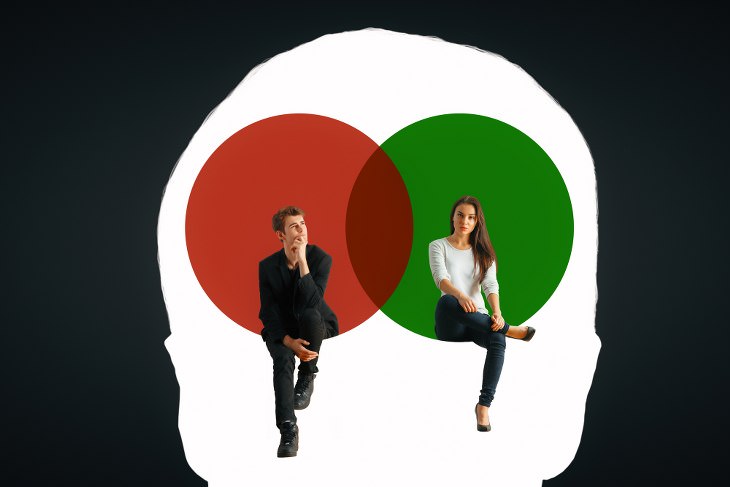
The researchers drew their inspiration from the differences they observed in mental illness between the sexes. “Not everyone’s equal when it comes to mental illness,” said Adrianna Mendrek, one of the researchers. "Greater emotional reactivity in women may explain many things, such as their being twice as likely to suffer from depression and anxiety disorders to men.”
Earlier studies have also given credence to the theory that women and men react to emotional stimuli in different ways. Mendrek and her co-researchers had previously found that the limbic system (the brain's emotion and memory center) reacted differently for men and women, when participants were shown negative images. They decided to go a step further for this study, as they now chose to research whether hormonal levels affect this psychological processing, too.
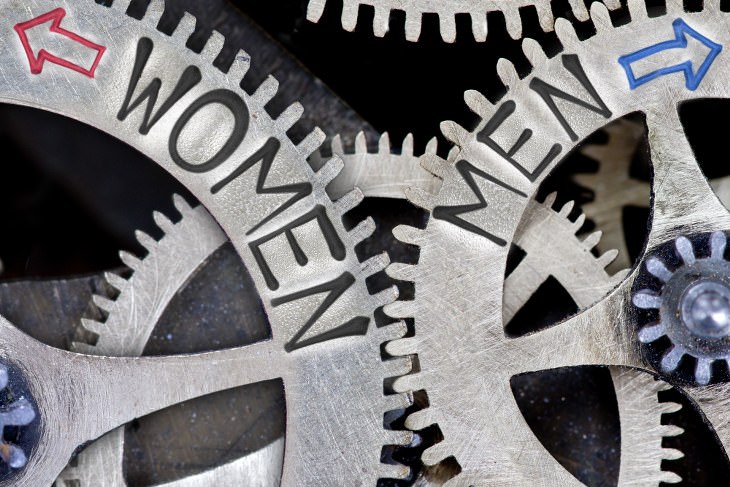
There were 46 participants who took part in the study (25 female and 21 male), and the researchers ruled out potential contributing factors such as age, education, ethnicity, marital status, and socioeconomic status. Every volunteer was given a blood test at the start to assess their levels of testosterone and estrogen in order to see in what way they affected the results. They were then exposed to images that evoked positive, negative, or neutral emotions, while they underwent fMRI brain scans. Participants also had to review their emotional responses when looking at each image.
Overall, men seemed far less reactive to the emotional images than their female counterparts. Higher estrogen levels seemed to indicate increased sensitivity to the images, while higher testosterone levels appeared to make the subjects more desensitized.
When assessing the brain's reaction to the images, they discovered that the dorsomedial prefrontal cortex (dmPFC) and amygdala on the brain's right hemisphere were activated for both men and women. However, the connection between these two components was discovered to be more powerful in men, leading to the additional interaction between these two parts, and thus further decreased sensitivity to the stimuli.

The researchers explained that the reactions of the dmPFC and amygdala can tell us loads about how people process their emotions. The dmPFC is the part of the brain that helps process social interactions and mediates reasoning, emotions, and perception. The amygdala, on the other hand, is the part that is used to detect threats, and is often triggered when somebody experiences sadness or fear.
“A stronger connection between these areas in men suggests they have a more analytical than emotional approach when dealing with negative emotions,” said Stéphane Potvin, associate professor at the University of Montreal’s Department of Psychiatry. “It is possible that women tend to focus more on the feelings generated by these stimuli, when men remain somewhat ‘passive’ toward negative emotions, trying to analyze the stimuli and their impact.”
Mendrek's team believes that their study shows just how the male and female brains seem to function differently at a psychological level. “There are both biological and cultural factors that modulate our sensitivity to negative situations in terms of emotions,” Mendrek said. She concluded that the next step forward is to research exactly how hormones affect people's reactions to various types of emotions, such as sadness, fear, or anger.
Source
Images
 8:56
8:56
2021's Biggest Breakthroughs in Neuroscience
What did 2021 bring to our understanding of our minds? Have a look...

The Naked Truth Behind Why Men Don't Listen to Women
Have a good look at the 10 biggest reasons why men don't always appear to listen to the women in their lives.

Birds Might Have Conscious Experiences, New Studies Reveal
Two grounbraking studies of birds brain structure reveal that avian and mammal brains are more similar than we thought - birds might even be self consious!

This Study May One Day Help Treat Chronic Stress And PTSD
A recently discovered protein in the brain (p11) can be linked to both depression and stress and has the potential to help future treatments

Study Finds a Painless Way to Monitor Blood Sugar Levels
A new study found that continuous glucose monitors improve blood sugar control and quality of life in diabetes patients - pain-free.
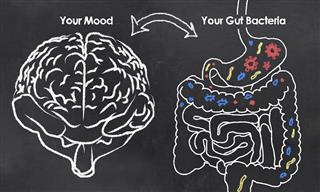
Can Probiotics Improve Mental Health? Research Says YES
Studies repeatedly show that probiotics can be a potentially effective treatment for several mental health issues. This is what is currently known on the topic.

These Theories About Reality & the Universe Will Stun You
You will be shocked to discover these 10 surprising theories of the universe and reality.

New Study: Are Dogs Even More Intelligent than We Thought?
New study sheds more light on canine intelligence, making some fascinating discoveries.

Science Breakthrough: An Immunization Against Skin Cancer?
This scientific breakthrough offers hope for those who are struggling with skin cancer. You are now invited to discover more about this revolutionary vaccine.
 3:50
3:50
Do You Know What Alzheimer's Really Is?
This video will shed light on the different stages of this complex and incredibly destructive disease.

10 Unanswered Mysteries You've Always Wondered About!
You might not have thought about the most curious cases of the bizarre things that we encounter every day.
 16:55
16:55
Sleep Inventions: 16 Gadgets to Help You Doze Off
If you frequently struggle with sleep, then trying these amazing new sleep innovations could help change your life.

26 Incredible Facts About the Human Mind
The human brain is an interesting and powerful organ, which is why we've gathered 26 interesting facts about exactly how human psychology works.
 3:16
3:16
You Wouldn't Believe How Far Technology Has Come
Take a look at the advancements of technology in this video. Impressive.

9 Great NASA Inventions That Took the World By Storm!
For around six decades, NASA have been inventing top-notch products. Here are nine great examples!
 20:01
20:01
Future Tech: 19 Innovations About to Change Our World
These groundbreaking new technologies will change our world.

Six Inventions Da-Vinci Made Ahead of Their Time
He created and envisioned many inventions that were sometimes even centuries ahead of their time. Was there ever a genius as great as Da-Vinci?

20 Amazingly Simple Inventions That Make Life Easier
Some wonderful inventions can fix some of the most annoying little problems that bug us every single day. Here are 20 of the most inventive ideas I've ever seen that I can't believe no one has invented before.

10 New Things We've Learned About The Brain
We have learned some astonishing new things about the human brain in recent times.

Could This Popular Ingredient Be a Cause of Cancer?
The chemical triclosan began to appear in a multitude of products in the early 1970s. This ingredient, found in a multitude of products has been linked to cancer.
 15:07
15:07
Amazing New Scientific Discoveries You Missed in 2024
There have been so many interesting scientific discoveries this year that we have missed!
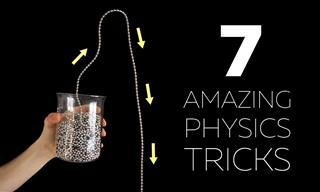 6:47
6:47
7 Exciting Physics Tricks You Have to See!
Watch these seven remarkable physics tricks in this exciting and fun video.

Is it REALLY the Coffee that Wakes Us Up in the Morning?
A recent study has revealed that the coffee you drink may just be a placebo...

6 Fascinating Stories of Accidental Medical Discoveries
From penicillin to pacemakers, here are the medical breakthroughs that were discovered by accident.

New Study: There is a Sure Way to Slow Aging
This new study confirms what has long been suspected: The less calories we consume, the slower we age.
 15:41
15:41
Keep Your Home Safe with These Handy Gadgets
These 13 devices will transform your home security.

Let's Learn All About Your White Blood Cells
White blood cells (WBCs) are the part of your immune system which is responsible for fighting infection. Learn all about them here!
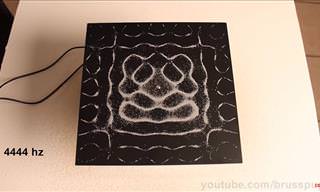 3:39
3:39
Magic is Only A Vibration Away With This Great Experiment
All it takes is some sand, a metal plate and carefully toned vibrations from a speaker to create stunning and complex patterns. This video shows you the amazing results!
 54:17
54:17
Science Philosophy: What is the TRUE Nature of Time?
Join us as we journey through theories, discussions, and insights that challenge our perceptions and broaden our understanding of time itself.
 6:33
6:33
The Story of the Internet: Who REALLY Invented It?
Who really invented the internet, and why did they REALLY do it?
 13:55
13:55
WATCH: What Is the Fingerprint of God's Creation?
The golden pattern, describes the mathematical code of the universe. Is this the scientific evidence of God's will and plan?

The Facts You Didn't Know About the Human Body...
Discover 120 fascinating and surprising facts about your body you may not have known. Going over most of the body parts, you will learn so much you never knew about the body we all use.

Amazing Science: THIS is the True Scale of Our Universe...
Get a sense of the true scale and shape of the universe we've discovered so far.
 6:21
6:21
How to Make Cleansing Hydrogen Water from an Old Battery
Let's embark on this scientific journey to unlock the potential of water and discover the practical uses of hydrogen and oxygen in everyday life.

17 Experiments That Produced Very Bizarre Results...
Take a look at this collection of photos showing how common people performed some fascinating accidental scientific experiments.
 4:19
4:19
The First Robot Ever Made Was Created 250 Years Ago...
This automaton is pure genius, especially when you consider it was built 250 years ago...

5 Robotics Trends Anticipated in 2024
What does 2024 have in store for the field of robotics?

New Study: A Pill that Works Out Your Muscles?!?
New study shows that, though we are not there yet, a pill can and probably WILL come out that works out the muscles and grows them.

Can One Photo Really Tell How Good Your Eyesight Is?
Scientists say that this single photograph can tell you whether you have good vision or not. Who can you see in the image?

This Is Why You Should Choose Paper Towels Over Air Dryers
Jet air dryers seem to provide a rapid solution to drying our hands in public restrooms, but they're actually havens for bacteria. Take a look.
 1:48
1:48
Boston Dynamic's Robot Does Some Incredible Things...
Boston Dynamics shows us again what her lead robot can do.
 4:40
4:40
Breathalyzers May Be More Important Than You Thought
This video does a great job in breaking down how in the future, breath analysis can be used to detect disease and prevent more invasive procedures.

See the World From Up Close - 17 Fascinating Macro Photos
Seeing ordinary objects like honey, paracetamol, and snow through a microscopic lens teaches us how beautiful and intricate they really are!
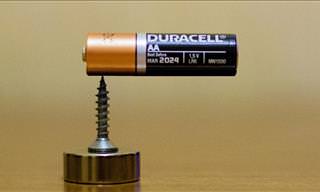 3:28
3:28
Did You Know That Batteries and Magnets Can Make Magic?
Here are some cool magic tricks you can try at home using only a few magnets, batteries and other household items. Watch carefully as the magician puts together a completely self-reliant motor
 15:30
15:30
Experts Are Still Baffled by These Ancient Artifacts
These mysterious relics have left experts puzzled.
 26:43
26:43
These 20 Tech Inventions Will Define the Next Decade
The future is here. Check out some emerging technologies that are all set to chane our world forever.
 1:29
1:29
A Must See: White Cells Devouring Bad Bacteria!
A real look at how white cells identify and consume harmful bacteria.


